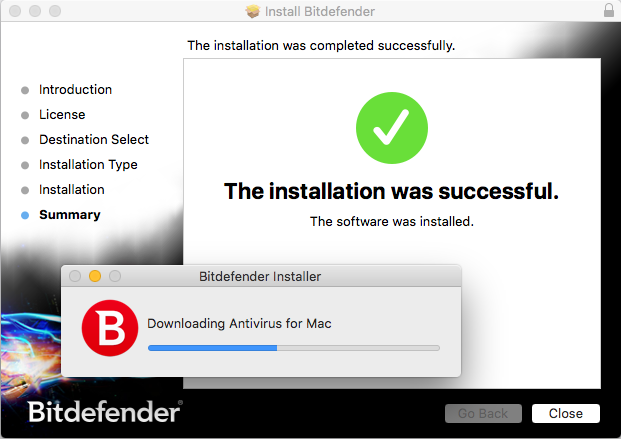Supported Upgrade Paths To Endpoint Protection For Mac

- Supported Upgrade Paths To Endpoint Protection For Mac High Sierra
- Supported Upgrade Paths To Endpoint Protection For Mac
Use a configuration profile to upgrade Windows 10, or switch from S mode in Intune. 5 minutes to read. Contributors. In this article Configure an upgrade profile in Intune to automatically upgrade devices that run Windows 10 edition to a different edition. Also see the supported upgrade paths. Before you begin Before you upgrade devices to the latest version, you need the following prerequisites:. A valid product key to install the updated Windows version on all devices that you target with the policy (for Windows 10 Desktop editions).
You can use either Multiple Activation Keys (MAK) or Key Management Server (KMS) keys. For Windows 10 Mobile and Windows 10 Holographic editions, you can use a Microsoft license file that includes the licensing information to install the updated Windows version on all devices that you target with the policy. The Windows 10 devices you assign the policy are enrolled in Microsoft Intune. You can't use the edition upgrade policy with PCs that run the Intune PC client software. Supported upgrade paths The following table lists the supported upgrade paths for the Windows 10 edition upgrade profile.
Revision History This release includes support for Standalone E80.71 Endpoint Security VPN client and E80.71 Capsule Docs Mac Clients. The managed E80.71 Endpoint Security Client for Mac is available with support for FileVault with local users only. Using fileVault with mobile network accounts can lead to deletion of the Personal Recovery Key which in this case can cause data loss. To get the managed Client,. Check Point is working with Apple to solve the FileVault limitation and will update upon resolution. Notes:. The relevant links to downloads are located in the relevant section, i.e.
Standalone Clients, Utilities/Services. The relevant links to documentation are located in the ' Documentation' section. It is strongly recommended that you read the, before installing this release. Also refer to:. For E80.71 releases for Windows: Refer to.

This release includes support for Standalone E80.71 Endpoint Security VPN client and E80.71 Capsule Docs Mac Clients. The managed E80.71 Endpoint Security Client for Mac is available with support for FileVault with local users only. Using fileVault with mobile network accounts can lead to deletion of the Personal Recovery Key which in this case can cause data loss. To get the managed Client,. Check Point is working with Apple to solve the FileVault limitation and will update upon resolution. Notes:. The relevant links to downloads are located in the relevant section, i.e., Standalone Clients, Utilities/Services.
The relevant links to documentation are located in the ' Documentation' section. It is strongly recommended that you read the, before installing this release. Also refer to:. This release adds these new features: macOS High Sierra (10.13) support for the Endpoint Security client. 10.13.1 or higher is required. macOS High Sierra (10.13) introduces a new feature that requires user approval before loading.
This means that to fully activate Endpoint Security, the user must after installing the client, open 'System Preferences Security & Privacy' and approve system extensions from Check Point. After installing the Endpoint Security client blades: Media Encryption, Firewall, and Capsule Docs, this message shows: System Extension Blocked.
A program tried to load new system extension(s) signed by 'Check Point Software Technologies'. If you want to enable these extensions, open Security & Privacy System Preferences. New Native Encryption Management.
Encryption management based on FileVault, the native OS encryption from Apple. Upgrade gives a seamless migration to the new Native Encryption Management. The disk is encrypted at all times. Support for seamless in-place OS upgrade to macOS High Sierra (10.13). You can help users recover FileVault-encrypted data if they cant log in to their Mac. You can help users recover their data or reset their password using a personal recovery key that is unique to the client computer. Alternatively, the administrator can use an institutional recovery key to recover data on a Mac that is deployed with this key.
Remote Access VPN. Support for Split DNS (disabled by default). Media Encryption and Media Encryption Offline Tool. Check Point CryptoCore 4.0 is used instead of OpenSSL, which is deprecated by Apple. The PKCS#5 PBKDF2-HMAC-SHA256 standard for password based key derivation replaces a proprietary algorithm. New encryption progress indicator. Capsule Docs.
Supported Upgrade Paths To Endpoint Protection For Mac High Sierra
Editing capabilities for protected documents. Changing the document protection settings. Microsoft Office 2016 support. Document expiration support. Offline work support. Standalone Clients Downloads.
Supported Upgrade Paths To Endpoint Protection For Mac
Note: These Standalone clients do not require Endpoint Security Server installation as part of their deployment. E80.71 Standalone Clients Platform Package Link macOS E80.71 Endpoint Security VPN for macOS - Disc Image (DMG) (DMG) E80.71 Endpoint Security VPN for macOS - Automatic Upgrade package (PKG) (PKG) E80.71 Endpoint Security VPN for macOS - Signature for automatic upgrade (signature) Capsule Docs E80.71 Clients Platform Package Link macOS E80.71 Capsule Docs Mac Editor (DMG) Utilities/Services Downloads.